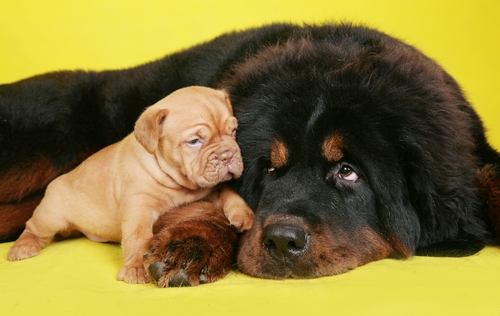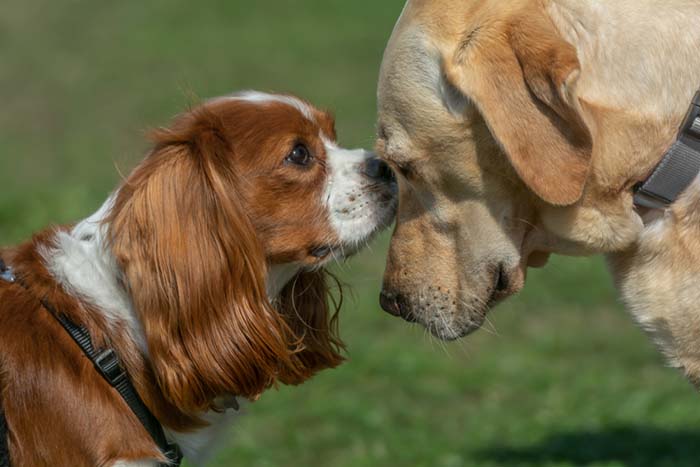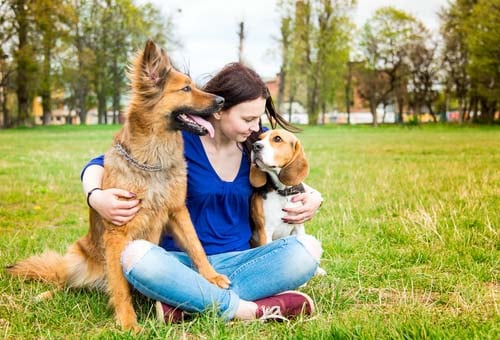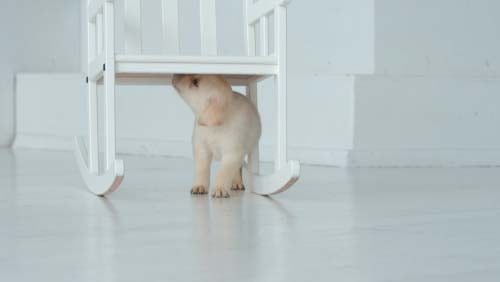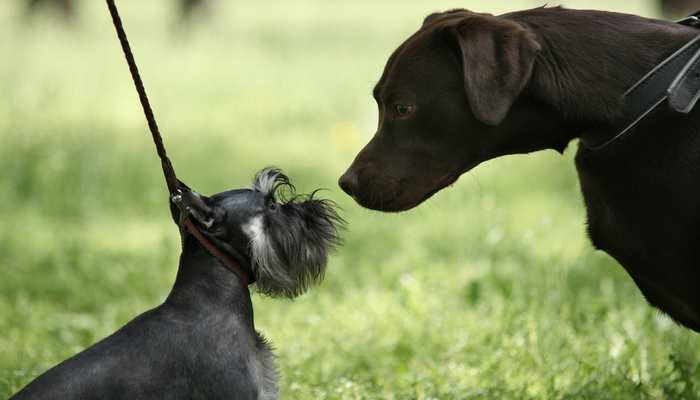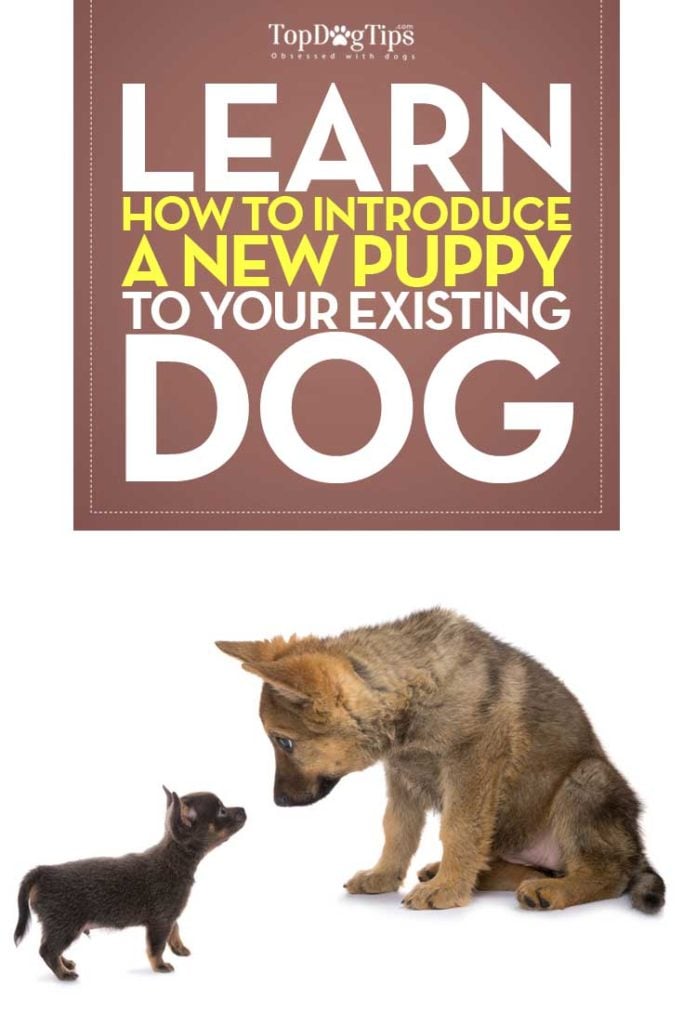Adopting a new puppy is such a special occasion. But have you thought about how to introduce your puppy to an existing dog in your home to make sure they get along? What if your existing dog isn't ready for a new friend? Fortunately, there are ways to ensure that both of your dogs like each other if the introductions are made proper.
Table of Contents
Existing (Older) Dog vs New Dog
Oftentimes, this is nothing to worry about. Most dogs enjoy spending time with other pets and learning how to introduce a puppy to an existing dog won't be a issue. However, not every dog wants a new friend, and sometimes there can be complications.
For example, if your current dog is a senior, he may not be able to handle having a puppy around full time. So perhaps it is better that you adopt another adult or senior dog, or wait until your existing dog is gone before thinking about bringing a puppy home.
You should also think about all the activity and chaos that comes with having a puppy. Is that something that your existing dog can deal with? If you haven't adopted a new dog yet, then the first step will be deciding whether or not this is the best choice for every member of your family.
How to Introduce Your Puppy to An Existing Dog
1. Before Anything, Use a Scent Article
Before you bring a new puppy home, consider having a scent article.
As I explain in my video above, using a scent article is what we did before bringing home our first puppy. A scent article is any cloth item of your choosing that smells like one of the pets for whom you're arranging the meeting. It allows both dogs to be able to get used to each other's smell before they actually meet in person.
In our situation, we used a small blanket, and we let our current older dog sleep with it for a week. Her scent got all over the blanket. Then we gave it to the shelter of our future puppy. The rescue allowed the puppy time to lay with the scent article. They kept it for about a week, too, and we brought it back home to give to our existing dog.
This is just one of the tips that will make the introduction between an older dog and a new dog smoother. Below are a few more things you can do on top of that.
2. Be Ready for “Dog Communication”
Expect some communication from both of your dogs, the new and the old. Puppies tend to be very vocal with a lot of yips and yelps, but they don't know how to speak the same language as your adult dog that's been adjusting to the world for a long time now.
Fortunately, what tends to happen is your existing dog will give the puppy a few pointers. Expect some growling and even some minor snapping – these things are fine (as long as you supervise and watch out for physical confrontations). Generally, this is how an adult dog would be teaching the young pup to speak and act like a big dog.
Using this type of communication, your existing dog is teaching a puppy when enough is enough, and how to read the silent cues that dogs give each other. Unfortunately, puppies don't always take those silent cues without a little persuading. These lessons are important for the two dogs to get along and live alongside each other in the future.
3. You'll Need to Supervise
You'll need to make a safe space for each dog. This can be a dog bed, dog crate or other separated area where each dog can go to get away and have some alone time. Everyone needs time to themselves once in a while, even our canine family members.
I recommend you take time off work after you bring home a new dog. When learning how to introduce your puppy to an existing dog, you'll have to supervise both of them as they get to know each other. For at least the first few days, your pets will need constant monitoring, just in case.
If you need to leave your dogs alone before you are completely sure that there will not be any issues, secure your older dog in a crate. This will prevent any potential accidents.
Above all, remember to avoid punishment. If you're always supervising your pets, you'll quickly notice the signs if/when your adult dog is getting frustrated with the puppy and you can intervene before there is a problem.
Do not punish your adult dog if he barks or growls at the puppy. Don't get angry when he gets frustrated with the pups antics. Instead, reward the positive behavior. Praise your existing dog when he's being tolerant of the silly puppy and reward him for playing gently with his new friend.
4. The Indoor/Outdoor Sniffing Party
I recommend you bring a friend or a family member to assist you with the initial meeting. You'll need a helper to bring your existing dog outside and entertain him while you bring the puppy indoors.
Give the puppy plenty of time to wander around the house and investigate his new environment. It may take 30-60 minutes, which is why it's best to have another person outside entertaining your existing dog so he doesn't feel jealous or territorial.
When the puppy has had ample time to sniff and investigate the new home, switch the dogs. Bring the puppy outside (make sure the adult dog doesn't see you) and bring your existing dog back inside.
Allow your older dog time to sniff around where the puppy was. This will get your existing dog used to smelling the puppy in his home. That way when the puppy comes back in, it won't be as big of a surprise.
5. The Meeting Outside
Once the initial sniff party is over, both dogs should be introduced to each other outside. This will reduce the chances that your existing dog will get territorial and aggressive because he feels the puppy stepping into his home.
Both dogs need to be on the leash.
Even if you trust your current dog completely, keeping both pets on a leash during the first meeting is the safest option. Your adult dog won't be able to hurt the puppy, and you'll be able to control the puppy so he can't overwhelm the existing dog too quickly.
Let the dogs approach each other and have their sniffaroo. Once you feel that your existing dog is comfortable with the puppy, you can let the puppy off leash first and allow him to explore while the older dog watches while still on the leash. After a few minutes, if you don't observe any aggression, unleash the adult dog, too.
Allow the two dogs to wander around outside with each other for a while before you let them in the house together. Dogs feel more comfortable in an open environment. If their trying to get used to each other inside, your existing dog may feel contained and become frightened or aggressive.
READ NEXT: How to Introduce a Dog to a Cat


